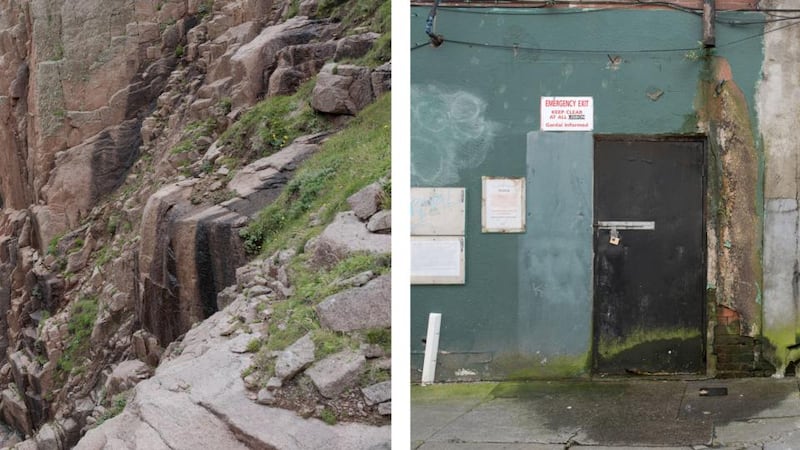Patrick Graham: Lullaby
Luan Gallery, Athlone
★★★★★
To paraphrase Paul Valéry: God made the world out of nothing, but the nothing shows through. In Patrick Graham’s paintings, the nothing shows through – not alone through a patchy metaphysical veil, but also through the conceits and pieties of the social, political and religious fabric of 20th-century Ireland. In his art, Graham has tested the limits of the given world, suspecting or perhaps convinced of an emptiness lurking in conventional authority, an emptiness both terrifying and thrilling.
It’s thrilling because it opens up the possibility of an alternative way of being and living. But one would have to say that the work presents accounts of individual experience so bruised, damaged, thwarted and betrayed that it’s questionable whether an alternative might ever be viable. As indeed was the case with so many of those betrayed by malign institutional practices through the decades.

Lullaby is a welcome survey of the work of a midlands artist – Graham was born in Mullingar in 1943 – in a (the?) midlands gallery. He was identified as a precocious talent by his art teacher, Diarmuid Larkin, and won an early scholarship to the National College of Art and Design. Although heaped with praise for his technical virtuosity as a painter and, especially, as a draughtsman, he did not settle into the artistic career that seemed to await him.
He was dissatisfied with his own facility. What he made with it felt impersonal to him. He stopped painting. Eventually, he arrived at a point where he felt he could make something that eluded the trap of facility.
Since then, about 1974, he has pursued an art of intense, at times ferocious, engagement. This involved him variously contradicting, discarding and dismantling the apparatus with which he worked. Words and numbers found their way into paintings, disrupting the primacy of the image. Paintings flouted the rules of composition and pictorial structure while remaining stubbornly, often obliquely, representational.
You could compare a painting to the back of an envelope embellished with doodles and jottings, an inventory of whatever was on his mind. Notoriously, on occasion he reversed the canvas and tore through the fabric, as though threatening to destroy the painting, just as he was determined to dispel other illusions. Despite his apparent iconoclasm, several observers noted that his innate technical ability endured and even flourished. He just employed it with greater freedom and unpredictability.
That still holds true, as the work in Luan confirms. Fragments of text, whether handwritten or beautifully painted, as though by a signwriter, are ubiquitous. Figurative subjects are rendered with immense care and attention, often in the manner of religious icons, isolated within the pictorial space. That space, often punctuated by rhythmic motifs, is an indeterminate ground, not a conventional picture plane.
Harold Rosenberg came up with a brilliant term for an artwork in modernity: an anxious object. In Graham's paintings and drawings, the picture surface is never just a neutral surface on which a composition is laid out; it's an anxious surface, a taut, sensitive, skin.
Even at his most downbeat, there was always a note of tender lyricism to Graham's work, and that has thrived and grown. It might be rash to say that he has mellowed, but for some time now he has been more relaxed about allowing room in his work for what is sweet in life, things he has always been alert to but perhaps wary of. That includes things as diverse as the richness of the landscape, and friendship, as in his friendship with the late Dermot Healy, which is marked in the show and the accompanying publication.
[ athloneartsandtourism.ie/ luan-galleryOpens in new window ]
Willie Doherty: Loose Ends
Kerlin Gallery, Dublin
★★★★★
Willie Doherty's Loose Ends was a commission by, among others, Donegal County Council, and is part of the Arts Council's programme commemorating 1916. It was a key piece in the Earagail Arts Festival.
The Donegal connection centres on Gola island off the coast. Two fishermen from Gola played an unwitting role in the Easter Rising when they were crewmen on the Asgard, which landed guns at Howth in 1914. Loose Ends is a two-screen video installation that counterpoints footage shot at two locations, Gola and Dublin's Moore Street, to which the 1916 rebels retreated and where they surrendered.
The videos are accompanied by a lugubrious voiceover. Two other strong video installations by him are currently showing: Remains, from 2013, is at Imma and Ghost Story, made for the Venice Biennale in 2007, is at the Ulster Museum in Belfast.
In Loose Ends, the voice is Seán McGinley's. The free-verse text delivers fragmentary snippets, with references to the passing of time, home, violent events. Doherty evokes and links two complementary places and ideas, the hard political reality of the urban east and the mythologised view of the west as an idealised Ireland.
In both cases the camera zooms slowly in on or back from a surface detail. The surfaces, be they urban bricks and mortar or the “pink granite stones” of Gola, are scarred, battered and worn by time. “In the end a fine dust is all that’s left . . . blown away . . . to nothing.” The implication is that both the practical political aspirations and the larger dream underlying them remain unrealised. They are still, presumably, loose ends. A tone of brooding, depressed introspection is considerably ameliorated by the rich visual textures and instances of beauty, however unlikely they may seem.












